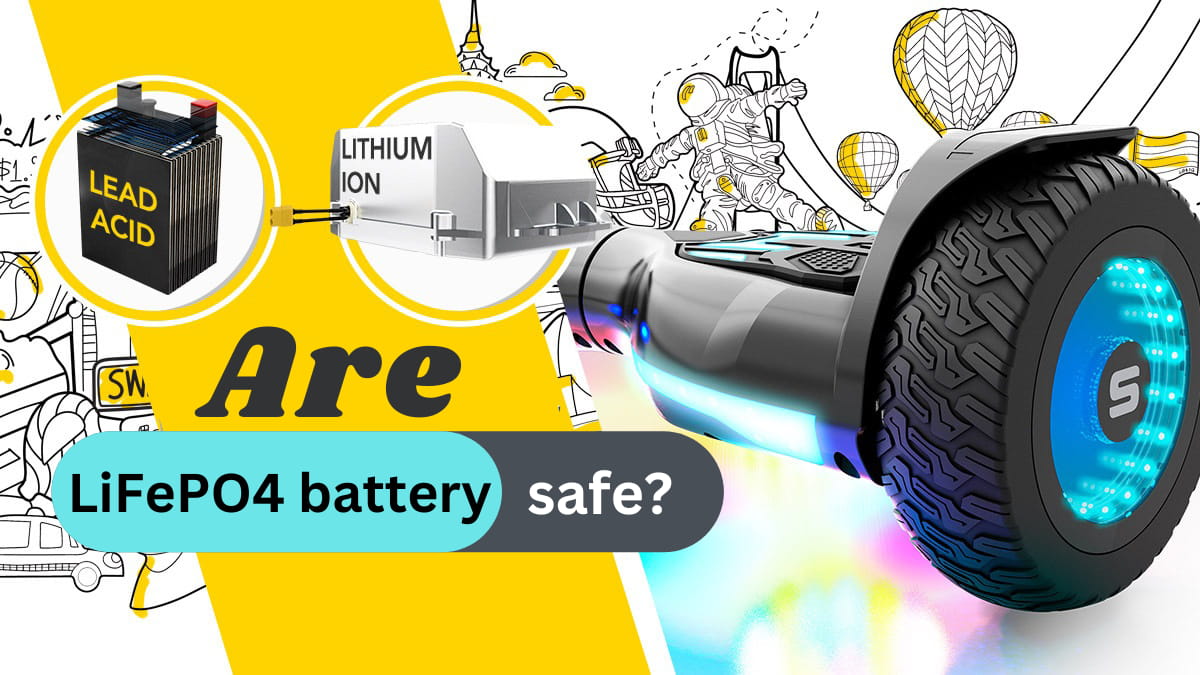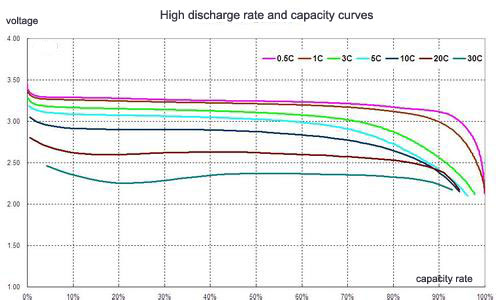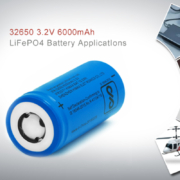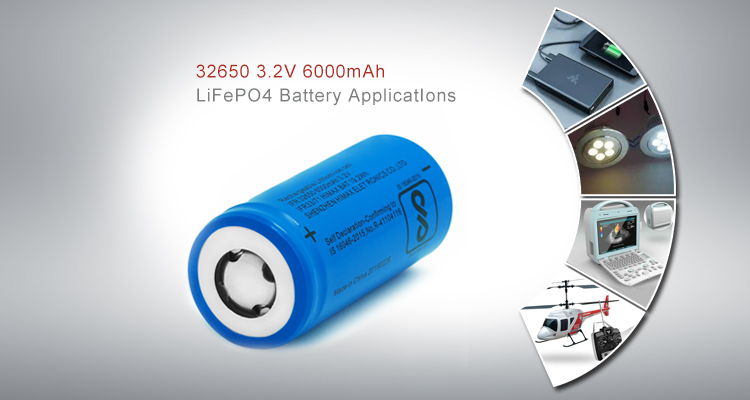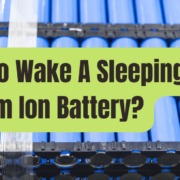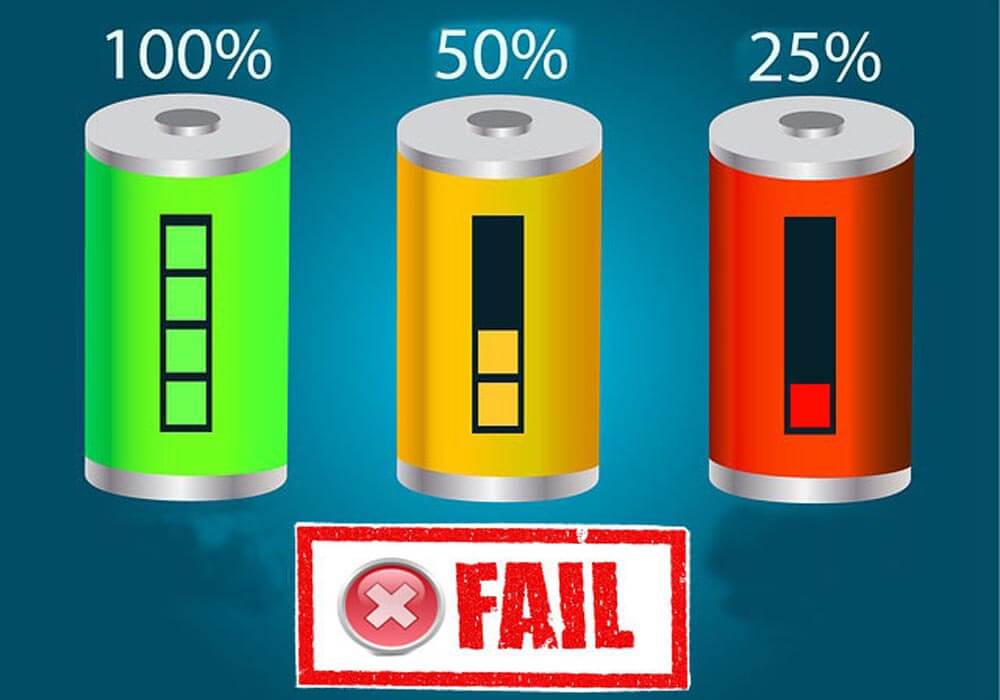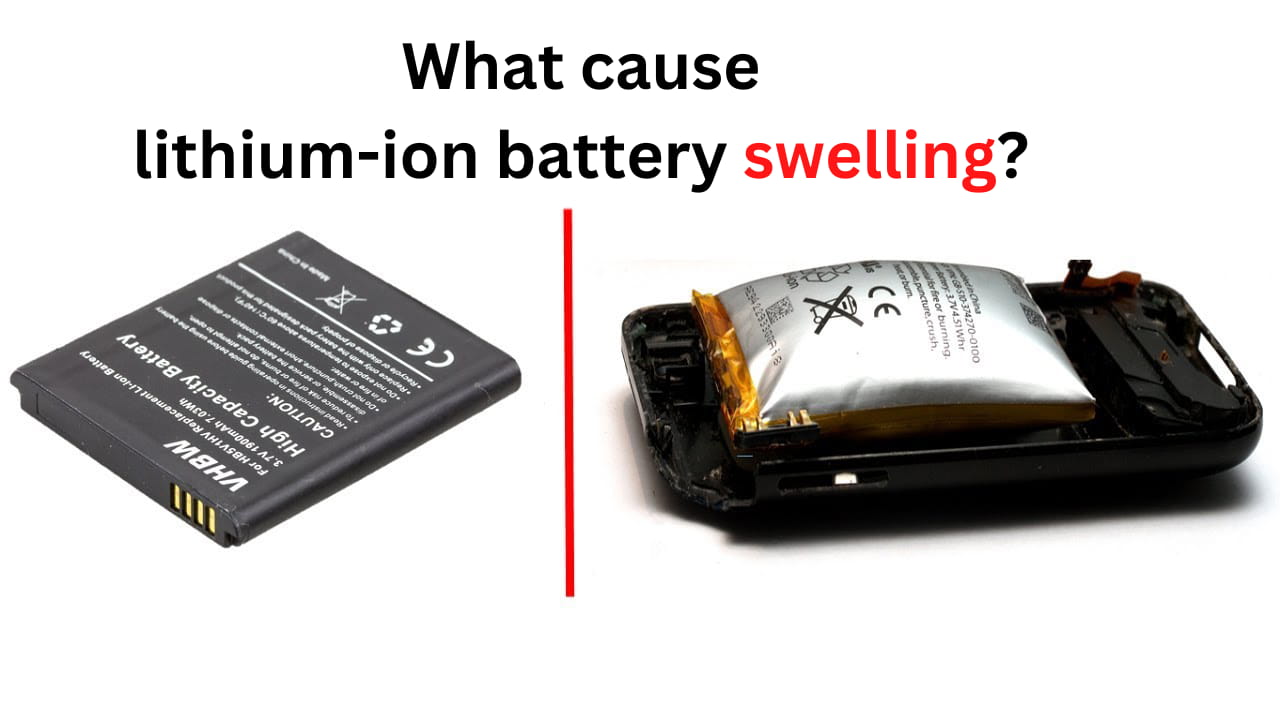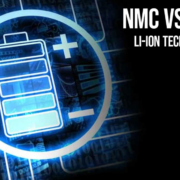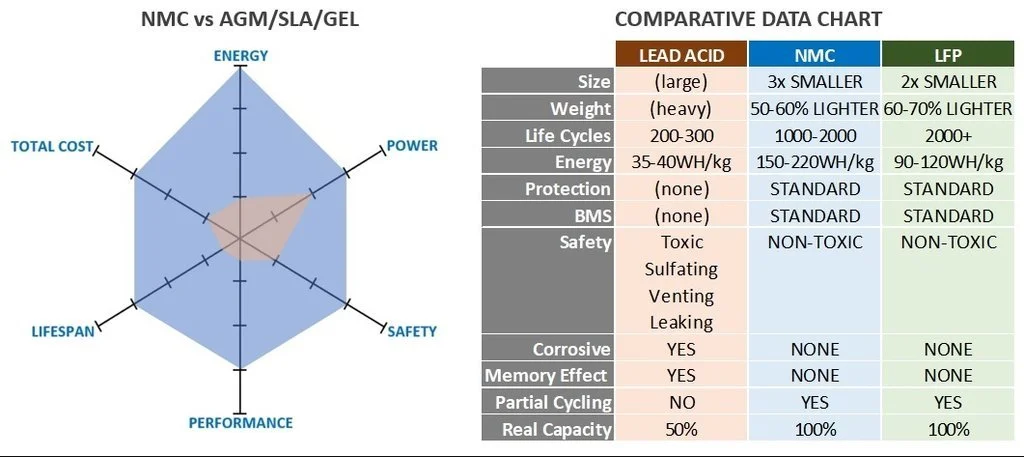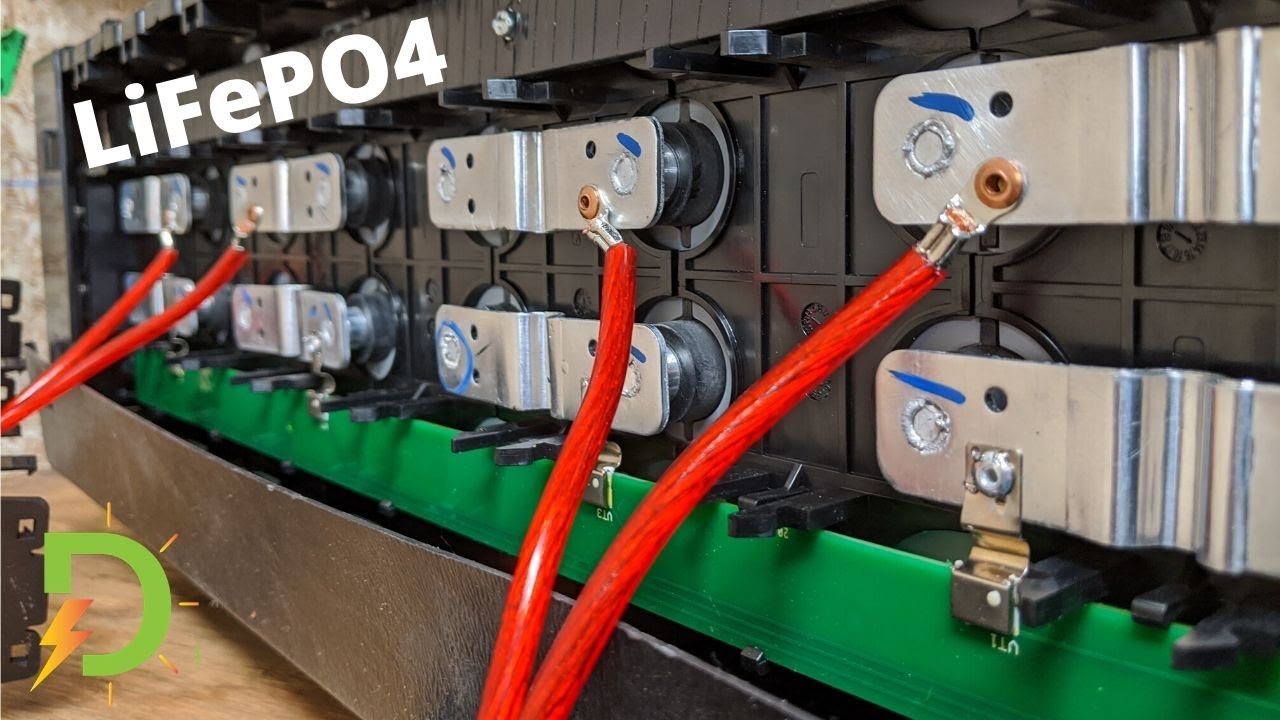Are you having difficulty getting your lithium-ion battery pack to power up? If so, you’ve come to the right place. This article will provide you with a step-by-step guide on how to wake a sleeping lithium-ion battery pack. In a few simple steps, you’ll be able to have your device up and running in no time! We’ll discuss why some battery packs may enter a sleeping state and provide tips for recharging them.
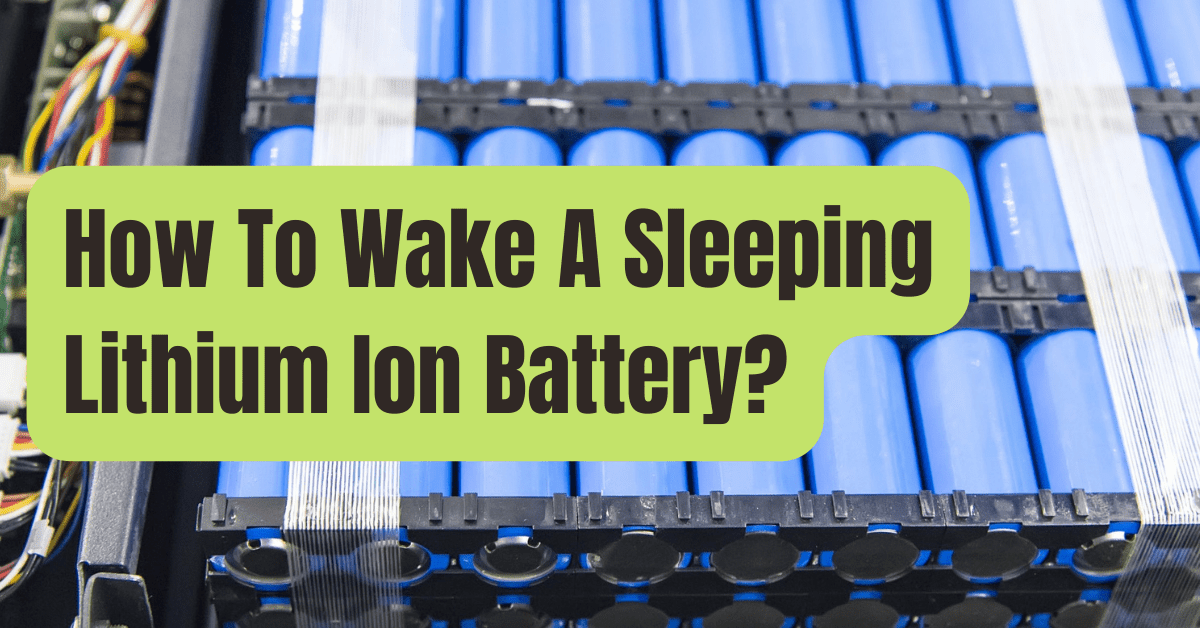
How to wake a sleeping Lithium-ion Battery pack?
To begin, connect the battery pack to a charger and leave it for a few hours. This gives the battery enough time to draw enough power from the charger to wake up. If this fails, you may need to slightly deplete the battery pack by attaching it to a load such as an LED light or motor. This should provide enough current draw for the battery to wake up and resume operation. Finally, if none of these solutions work, you may need to replace your lithium-ion battery pack completely. Make sure you buy one compatible with your device to avoid problems later.
Understanding Lithium-ion Battery Pack Sleep Mode
What is the sleep mode in Lithium-ion Battery Pack?
Sleep mode is an essential feature of lithium-ion battery packs that helps extend the cell’s life and protect it from damage. It reduces charge or discharge current when the battery is not used for a certain period. The sleep mode allows the battery to rest, which reduces strain on its components and lengthens its lifespan.
When a lithium-ion cell enters sleep mode, it decreases its internal resistance and stops working altogether. This happens when no current flows into or out of the cell over a certain threshold period. This means that if you don’t use your device for a while, the cell will enter sleep mode and prevent further damage to itself due to overcharging or undercharging.
Causes of Lithium-ion Battery Pack Sleep Mode
There are several potential causes of lithium-ion battery pack sleep mode issues ranging from low charge and extreme temperatures to improper charging practices and defective hardware components inside the device.
Consequences of leaving Lithium-ion Battery Pack in Sleep Mode
Leaving a Li-ion Battery Pack in Sleep Mode can lead to several consequences that may affect the performance and lifespan of the device. First, when a lithium-ion battery is left in sleep mode for an extended period, it will eventually discharge itself until all cells are entirely depleted. This discharge process can reduce the total amount of charge cycles available on the battery over its entire lifetime.
In addition, leaving a Li-ion battery pack in sleep mode can cause physical damage to the cells due to lack of airflow or chemical oxidation, resulting in reduced efficiency and capacity loss over time. It also increases internal pressure as decomposition gases build up within the cells, significantly reducing overall cycle life expectancy.
Finally, suppose a user doesn’t recharge their Li-ion battery pack often enough while in sleep mode. In that case, they risk irreversibly damaging their device due to the complete depletion of electrolytes within the cells.
Methods of Waking a Sleeping Lithium-ion Battery Pack
Fortunately, four methods are available for waking a sleeping lithium-ion battery pack, using the device, a charger, a multimeter, or a load tester.
Using the Device
It is possible to wake up a sleeping lithium-ion battery pack using the device in two ways.
The first approach involves simply plugging the device into a power source, such as a wall outlet or a USB port. This will start charging the battery, which should wake it up.
The second option is to power on the device while it is still unplugged. This will suck power from the battery, presumably waking it up. You can use your device usually when the battery has been woken up.
Using a Charger
A charger is an excellent technique to wake up a sleeping lithium-ion battery pack. The charger will provide the appropriate voltage and current to activate and recharge the battery. To accomplish this, you must first identify the optimal charging profile for your unique battery type. Once you’ve identified the suitable profile, connect the charger to the battery and let it charge until it reaches total capacity.
It is critical to remember that overcharging a lithium-ion battery can result in harm, so disconnect the charger after it has achieved total capacity. Furthermore, ensure that you are using the correct charger for your battery type; specific chargers may be too powerful for particular batteries, causing them to overheat or even catch fire.
Using a Multimeter
You can wake up a sleeping lithium-ion battery pack by using a multimeter. This can be done by connecting the positive and negative leads of the multimeter to the positive and negative terminals of the battery pack. Once connected, you should set your multimeter to measure voltage and then take a reading. If the voltage is below 3 volts, your battery has likely gone into sleep mode. To wake it up, you need to charge it for at least 10 minutes using an appropriate charger.
Once the charging process is complete, remove the charger from the battery pack and recheck its voltage with your multimeter. If it reads higher than 3 volts, your battery has successfully woken up from sleep mode. However, if it still reads below 3 volts after charging, you may need to repeat this process multiple times until the battery wakes up completely.
Using a Load Tester
Waking a lithium-ion battery pack using a load tester is relatively simple. First, you’ll want to connect the load tester to the battery pack. Then, set the current on the load tester to a safe level for your battery pack, which will not cause any damage. Once you have done this, please turn on the load tester and let it run for about ten minutes.
During this time, you should see an increase in voltage as well as an increase in capacity. If you do not see any changes after ten minutes, then it’s likely that your battery pack is already damaged and needs to be replaced. However, if you see improvements in voltage and capacity after ten minutes of running the load tester, your battery pack should be good to go!
Steps for Waking a Sleeping Lithium-ion Battery Pack
Step 1: Identifying the Type of Lithium-ion Battery Pack
First, identify what type of lithium-ion battery pack you have. This can be done by looking at the manufacturer’s specifications or consulting a professional.
Step 2: Selecting the Appropriate Method of Waking the Battery Pack
Two main methods of waking a sleeping lithium-ion battery pack are trickle charging and pulse charging.
Trickle charging involves connecting the battery pack to an external power source and applying a low current for an extended period. This is a good option if you want to avoid any sudden changes in voltage that could damage the cells in your battery pack.
Pulse charging involves connecting the battery pack to an external power source and applying a series of short bursts of high current. This is more effective at bringing a sleeping battery back to life than trickle charging, but it can be risky since it can cause significant stress on your cells if done incorrectly. It’s best used when you quickly wake up a deeply discharged battery, such as when trying to jump-start your car or get your laptop running again.
Step 3: Preparing the Equipment
Preparing before attempting to wake a sleeping lithium-ion battery pack is essential. The right tools and equipment can make the process much more straightforward and safer. Here is the essential equipment you’ll need: a charger, a multimeter, and a load tester.
The charger should match your battery pack’s voltage, amperage rating, and connector type. A multimeter will measure the battery’s charge level and resistance during charging. Lastly, a load tester will be used to assess how much current the battery can draw without being damaged or overcharged. It is essential to use all of this equipment to ensure safe operation when waking up the battery pack from its sleep state.
Step 4: Waking the Sleeping Lithium-ion Battery Pack
Using a charger: First, connect the charger to an appropriate power source and then make sure that the correct voltage setting is selected for your specific battery pack. Next, securely attach the charger’s output cables to your battery pack’s terminals. Then press the “charge” button on the charger and allow it several minutes before trying to turn on your device again. If you follow these steps correctly, your sleeping lithium-ion battery should be recharged and ready for use in no time!
Using a multimeter: First, make sure that the multimeter is set to measure DC voltage. Then, connect the red lead of the multimeter to the positive terminal of the battery pack and the black lead to the negative terminal. The multimeter should display the voltage of the battery pack. If it does not, your battery pack may be too discharged to be woken up with a multimeter.
If your multimeter does read a voltage, you can try applying an external voltage across the terminals of your battery pack. Connect one lead of a power supply or battery charger to each terminal and set it for around 3 volts more than your multimeter reads for the current-voltage on your battery pack. This should wake up any cells in your lithium-ion battery that are asleep due to deep discharge.
Using a Load Tester: You’ll need to connect the load tester to the battery pack’s terminals. Then, set the load tester to the appropriate voltage for your battery pack. Next, please turn on the load tester and let it run for about 10 minutes or until it reaches its maximum current limit. Finally, disconnect the load tester and check that the battery pack is charged.
It’s important to note that this method should only be used as a last resort if other methods of charging your battery pack have failed. Additionally, since this method involves introducing an external power source into your battery pack, it’s essential to make sure that you’re using a high-quality load tester explicitly designed for lithium-ion batteries. This will help ensure that your battery pack remains safe and functioning correctly.
How to Prevent a Lithium-ion Battery pack from Falling Asleep?
The best way to prevent a lithium-ion battery pack from falling asleep is to keep it regularly charged. Lithium-ion batteries naturally tend to lose their charge over time, so it’s essential to recharge them often. It’s also helpful to avoid storing the battery in extreme temperatures, as that can cause the battery to discharge quickly. Finally, if you’re not using your device for an extended period, it’s best to remove the battery and store it in a cool, dry place until you need it again. This will help ensure your battery stays healthy and holds its charge for extended periods.
Conclusion
Waking up a sleeping lithium-ion battery pack is relatively simple. Ensure that all the necessary steps are taken to avoid any potential damage to the battery before attempting to wake it up. Use a voltage stabilizer if available, or charge the battery with a low-voltage current while monitoring the process. If this doesn’t work, discharging the battery further will likely be sufficient to wake it up.
